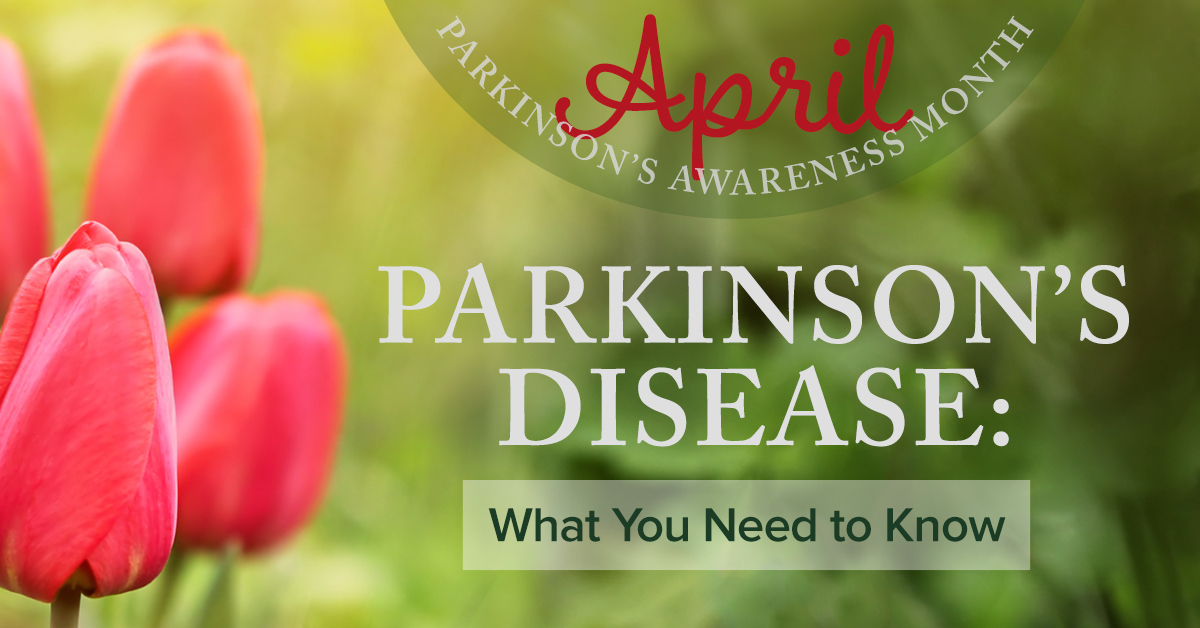Parkinson’s Disease - What You Need to Know
Parkinson’s Disease – What You Need to Know
April is Parkinson’s disease (PD) awareness month, so we’re joining with other organizations and individuals across the country to raise awareness about the disease that currently affects more than 1 million people in the U.S.
PD is a progressive disorder that affects movement, including tremors, slowness of movements and trouble walking. Other symptoms, such as trouble sleeping, depression and speech problems are also common with the disease. PD symptoms usually differ from person to person and generally develop slowly over years.
According to the Parkinson’s Foundation:
- PD is the second-most common neurodegenerative disease after Alzheimer’s disease.
- Nearly 90,000 people in the U.S. are diagnosed with PD each year.
- The number of people in the U.S. living with PD is expected to rise to 1.2 million by 2030.
- More than 10 million people world wide are living with PD.
- The incidence of PD increases with age, but an estimated 4% of people with PD are diagnosed before age 50.
- Men are 1.5 times likely to have PD than women.
- The cause remains largely unknown, but researchers believe it results from a combination of genetic and environmental factors
- There currently is no cure for PD, however, there are treatment options – including medication, lifestyle adjustments and surgery.
- The Centers for Disease Control and Prevention (CDC) rates complications from PD as the 14th cause of death in the U.S.
- Scientists are exploring ways to identify biomarkers for PD that can lead to earlier diagnosis and more tailored treatments to slow progression of the disease. Currently, therapies can improve some PD symptoms, but they do not slow or halt disease progression.
To learn more about PD, visit parkinson.org or call the Parkinson’s Foundation Hotline – 1-800-473-4636.
To find support and resources in your area, click here.






